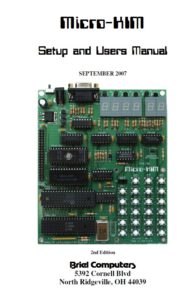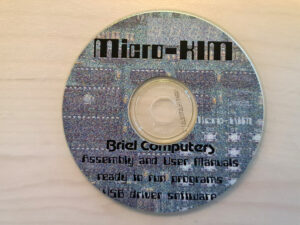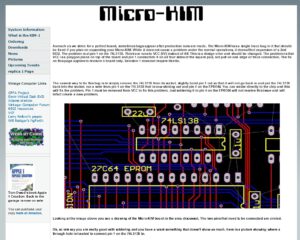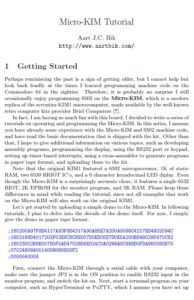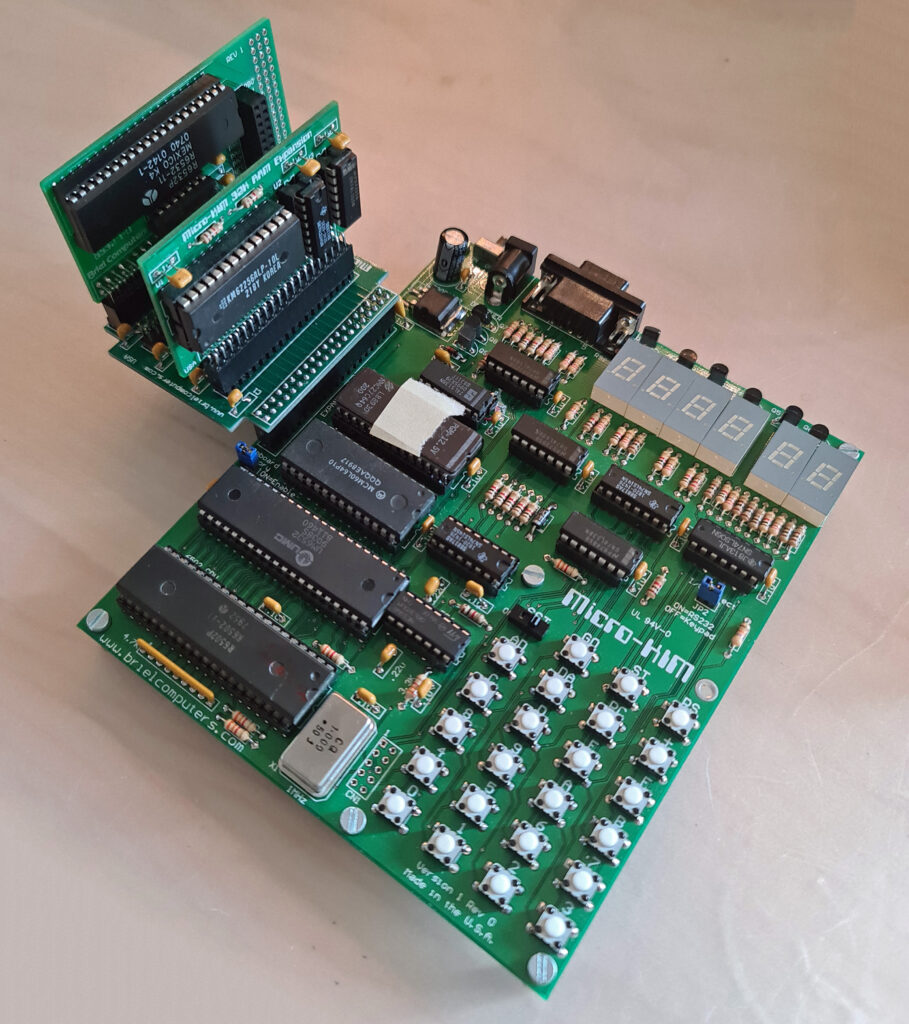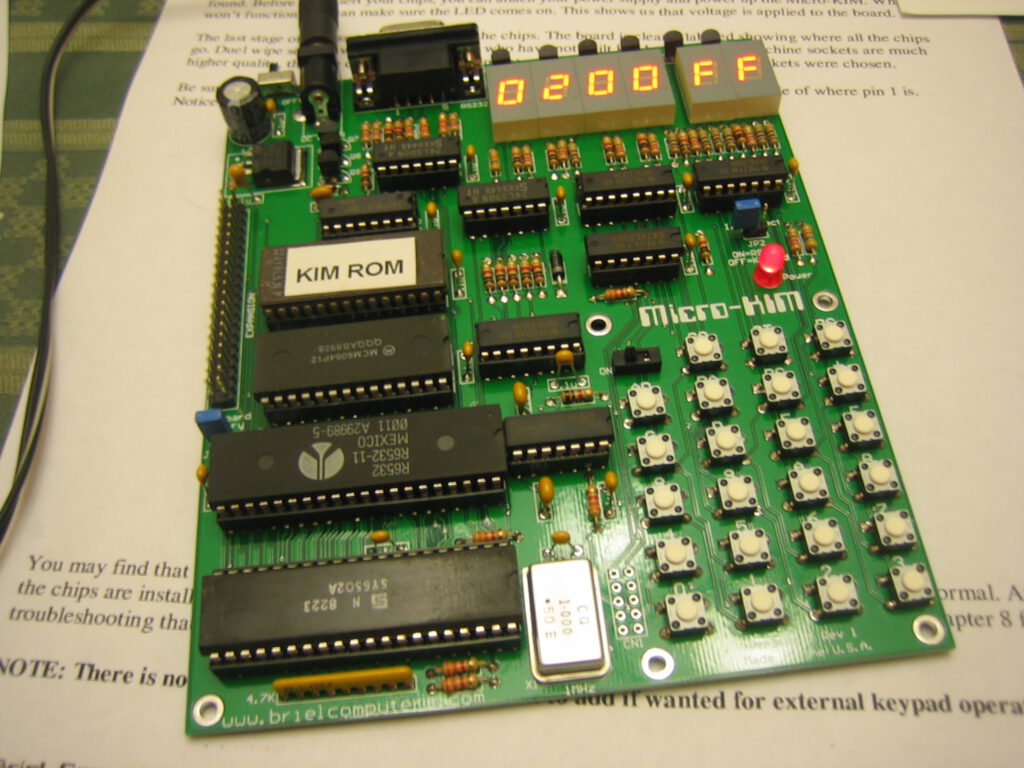The Micro-KIM is a SBC designed and built by Vince Briel. First sold in 2007 and alas not available anymore.
Update 2025: Vince Briel has released all design documents on his Retrotink website.
I have duplicated the contents below.
Based upon the ideas of Ruud Baltissen> how to replace the 6530 with a 6532, it was the first KIM-1 clone that was running the unmodified KIM-1 ROM.
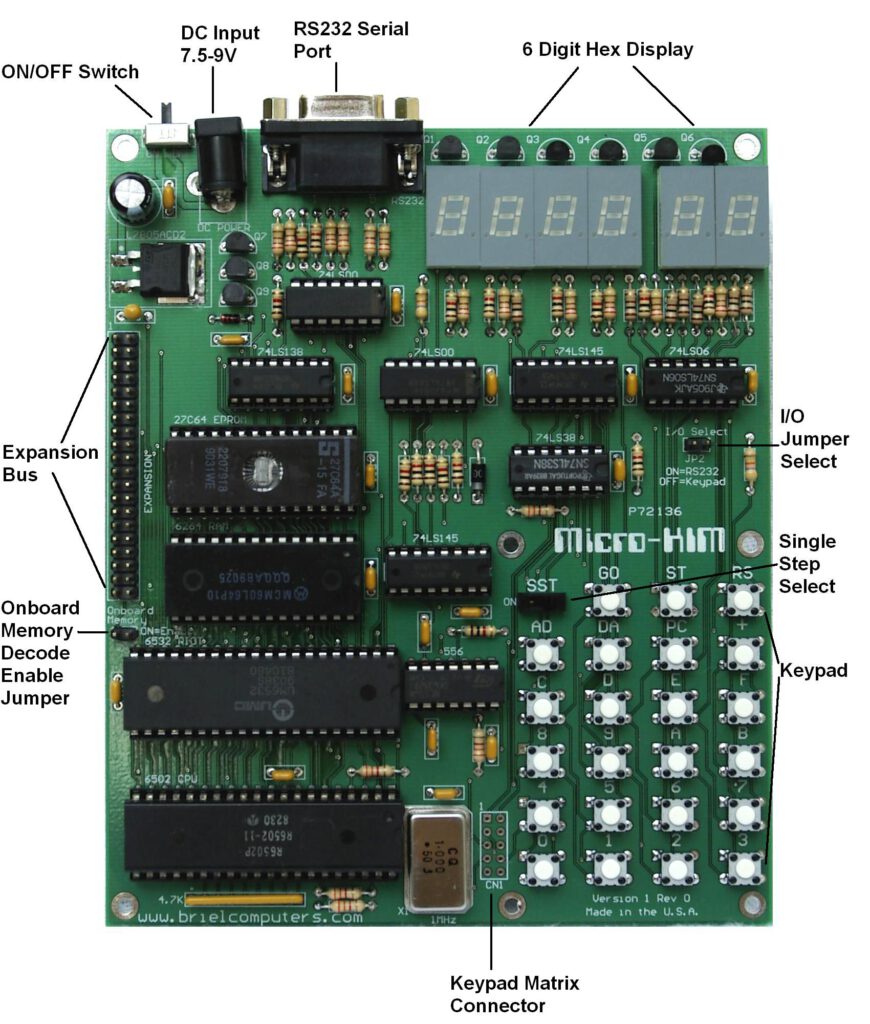
– Manuals, circuit diagrams, single step fix, tape devices, support Cd images
– Photos
– Videos
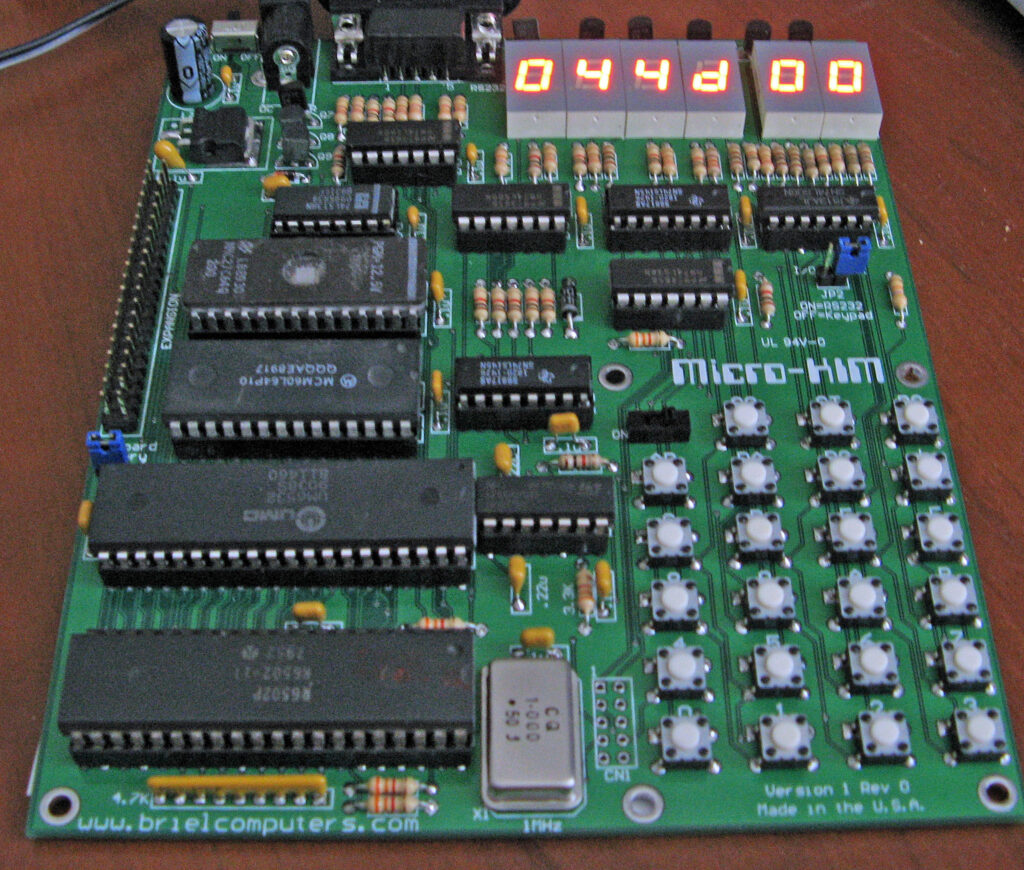
Specifications
- 6502 CPU running at 1Mhz
- 2K EPROM replacing built in ROM on 6530s
- 5K RAM using the KIM-1 memory map
- RS232 interface made to work with TIM built in KIM-1
- Single-Step mode for debugging
- debounced RESET and STEP switches
- 40 pin header for future expansion
- Expansion board for expansion connector with four slots available
- 32K RAM card
- Second 6532 board
- The I/O of the 6 digit display and keyboard are memory mapped exactly like the KIM-1 for full program compatibility
See the KIM-1 page for more KIM-1 info and programs.
First impressions
- It really feels like a KIM-1. Smaller, but just as simple to operate. Easy to connect a serial RS232 (USB) cable and connect to a terminal program. Minicom on Linux, Realterm on Windows e.g., no high demands on terminal emulation, just plain simple teletype at 9600 baud or less and the ability to capture output to a textfile or send a text file via the terminal
- No cassette port. This means the programs with real nostalgic value like the editor/assembler Micro Ade will not have much sense.
- Second 6532 is an option(though the 6530-002 and 003 ROM is present!).
- 32K RAM extension option. Yes, this makes the machine worthwhile! Now you can run KB9 Microsoft Basic or otehr KIM-1 software.
- Some small mistakes are on the version 1 Rev 0 board, fixed in the later version rev 1, this needs three hardware fixes to be made, so I have to get the soldering iron into action. Simple fixes, see below.
- Loading programs via the serial interface by sending a text file in papertape format is slow. But it works! Fun to test all those KIM-1 programs. KIMTAPE and KIMPAPER help a lot here also look at the 8 bit hex file conversion program there.
Tested programs
Most of the First Book of KIM programs work. Some require the presence of the second 6530 (6532 here).
See the KIM-1 software and manual pages. Also see the photos section for TinyBasic and KB 9 Basic.
See the PC utilities page for papertape and other conversion utilities.
Memory map
| Micro-KIM | KIM-1 | ||
| $0000-$03FF | 1024 Bytes of RAM | $0000-$03FF | 1024 Bytes of RAM |
| $0400-$07FF | 1024 Bytes of RAM | $0400-$07FF | Optional Memory Area |
| $0800-$0BFF | 1024 Bytes of RAM | $0800-$0BFF | Optional Memory Area |
| $0C00-$0FFF | 1024 Bytes of RAM | $0C00-$0CFF | Optional Memory Area |
| $1000-$13FF | 1024 Bytes of RAM | $1000-$13FF | Optional Memory Area |
| $1400-$16FF | Optional Memory Area | $1400-$16FF | Optional Memory Area |
| $1700-$173F | Optional 2nd 6532 I/O, Timer | $1700-$173F | 6530-002 I/O, Timer |
| $1740-$177F | 6532 I/O and Timer | $1740-$177F | 6530-003 I/O, Timer |
| $1780-$17BF | 64 Bytes RAM from 6532 | $1780-$17BF | 64 Bytes from 6530-003 |
| $17C0-$17FF | 64 Bytes RAM from 6532 * | $17C0-$17FF | 64 Bytes from 6530-002 |
| $1800-$1BFF | 1024 Bytes of EPROM | $1800-$1BFF | 1024 Bytes of ROM in 6530-003 |
| $1C00-$1FFF | 1024 Bytes of EPROM | $1C00-$1FFF | 1024 Bytes of ROM in 6530-002 |
| $2000-$FFFF | Unused memory | $2000-$FFFF | Unused memory or 32K RAM baord |
* The 6532 has 128 bytes of RAM vs. only 64 bytes on the 6530. The Micro-KIM utilizes all 128 bytes from
the single onboard 6532 so all original memory locations are available.
Manuals, circuit diagrams, notes and support Cd images
Extensions and audio interface solutions
- Solid State Tape Device for the (micro)KIM
- Home-Brew Cassette Interface for Micro-KIM
- Micro-KIM RAM, EPROM and Expansion boards
65C02 Single step fix by Timali
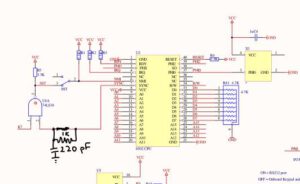 My Micro-KIM shipped with a 65C02, and apparently there is a timing issue which prevents single-step from working with the 65C02. I tried an original NMOS 6502, and single-step worked ok with it, but not with any of my 65C02s. I did some debugging with my scope and determined that there is a small timing difference causing the SST signal to be erroneously asserted (pulled low) for 100-200 ns during EEPROM accesses with the 65C02, which is just enough to cause a problem. The easiest way I could think of to fix this was to delay the SYNC signal briefly with a small RC circuit, which prevents the glitch in the SST signal. I cut a trace on the back side of the board and added a small resistor and capacitor, and single-step is now working correctly with my 65C02’s. It still works with the original 6502, also. Click on the image to see a larger picture.
My Micro-KIM shipped with a 65C02, and apparently there is a timing issue which prevents single-step from working with the 65C02. I tried an original NMOS 6502, and single-step worked ok with it, but not with any of my 65C02s. I did some debugging with my scope and determined that there is a small timing difference causing the SST signal to be erroneously asserted (pulled low) for 100-200 ns during EEPROM accesses with the 65C02, which is just enough to cause a problem. The easiest way I could think of to fix this was to delay the SYNC signal briefly with a small RC circuit, which prevents the glitch in the SST signal. I cut a trace on the back side of the board and added a small resistor and capacitor, and single-step is now working correctly with my 65C02’s. It still works with the original 6502, also. Click on the image to see a larger picture.
Photos
Tiny Basic
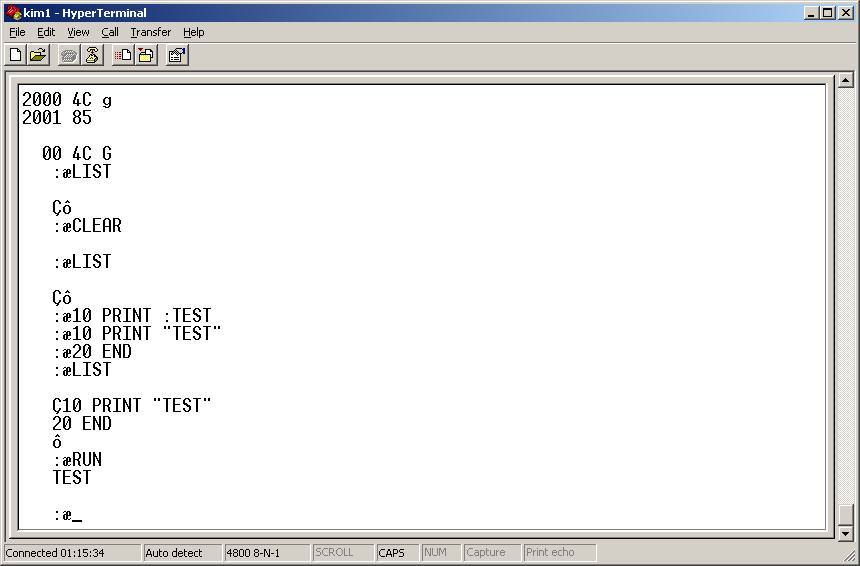
Microsoft Basic KB9
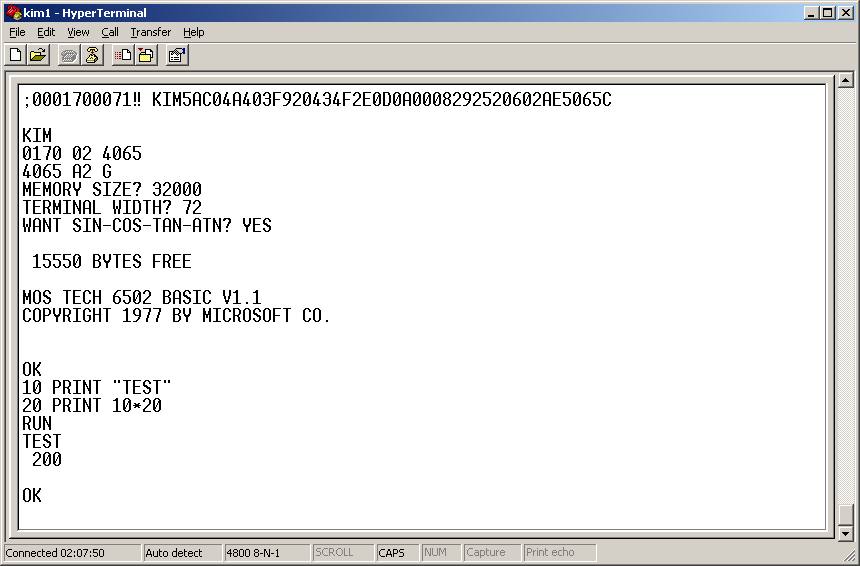
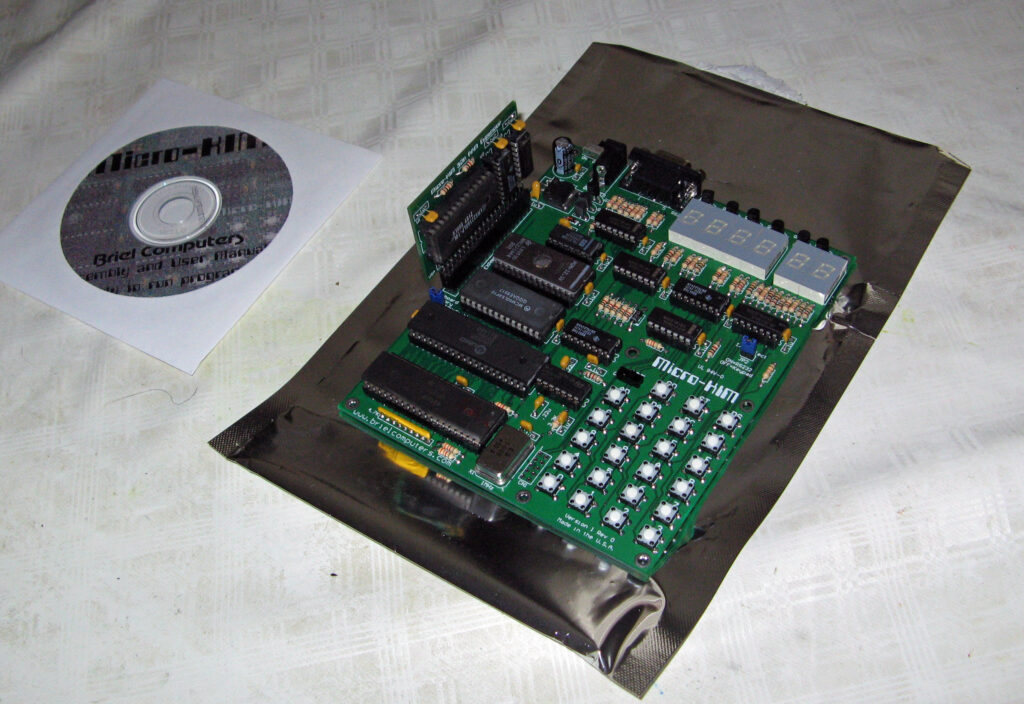
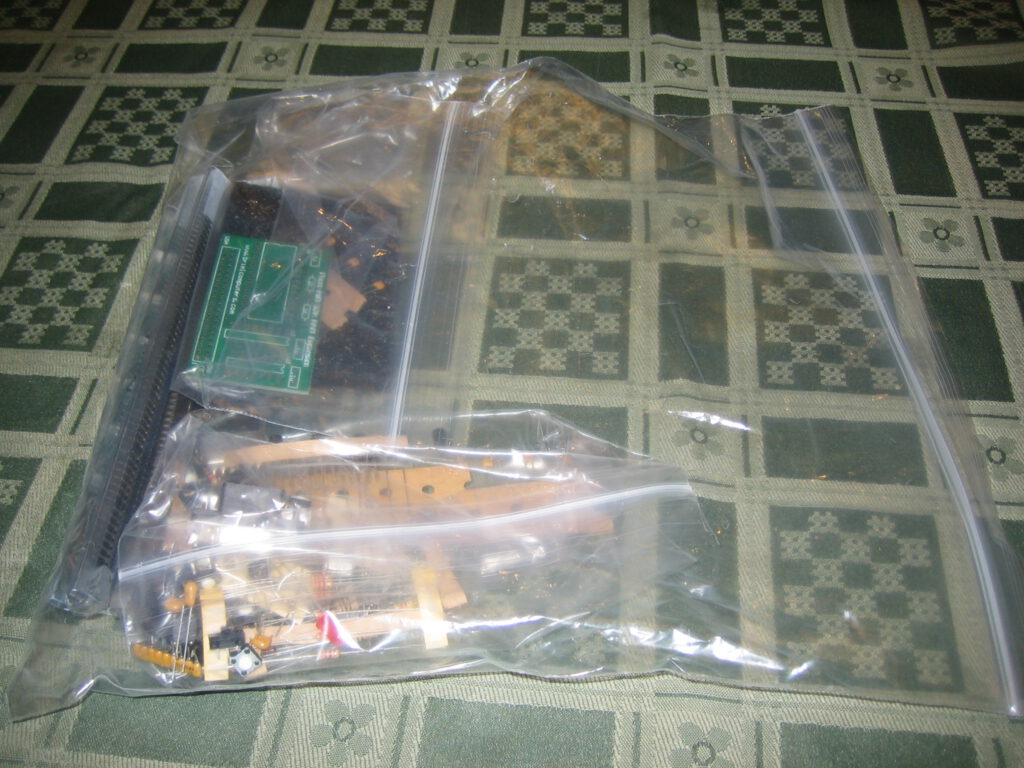
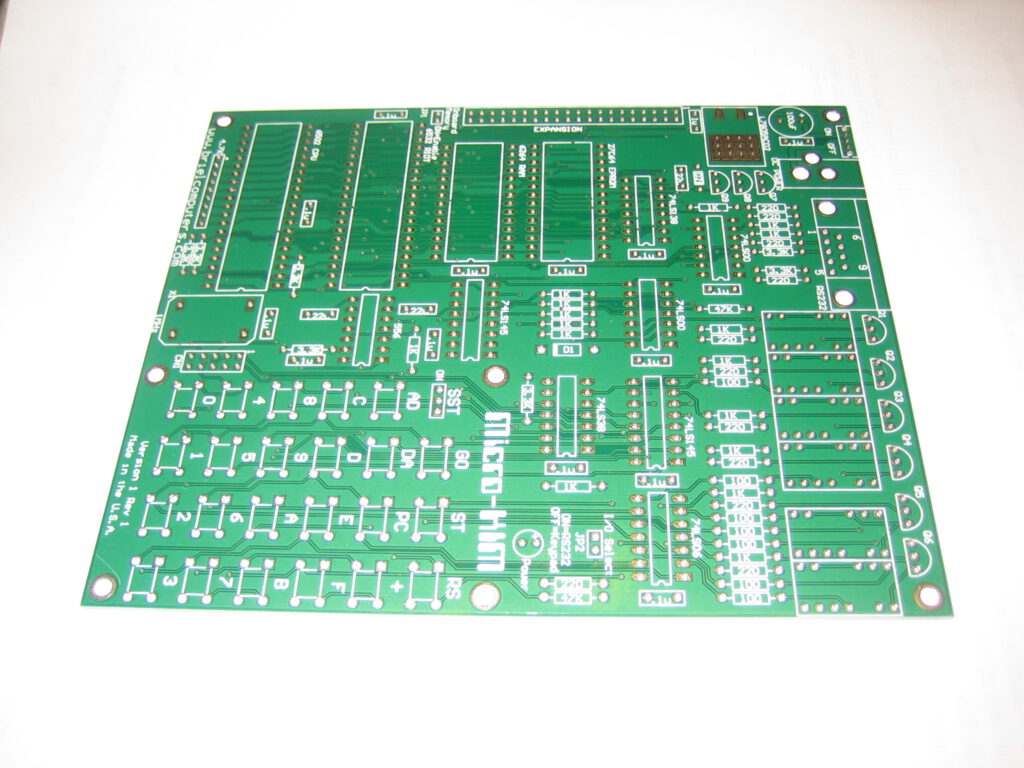
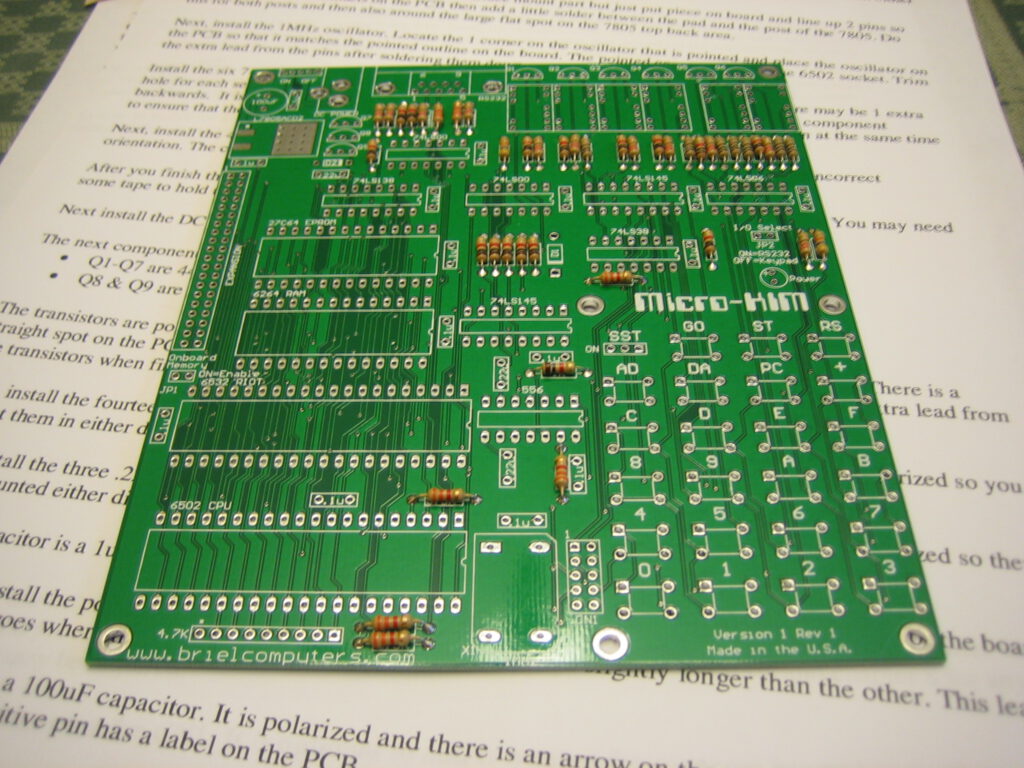
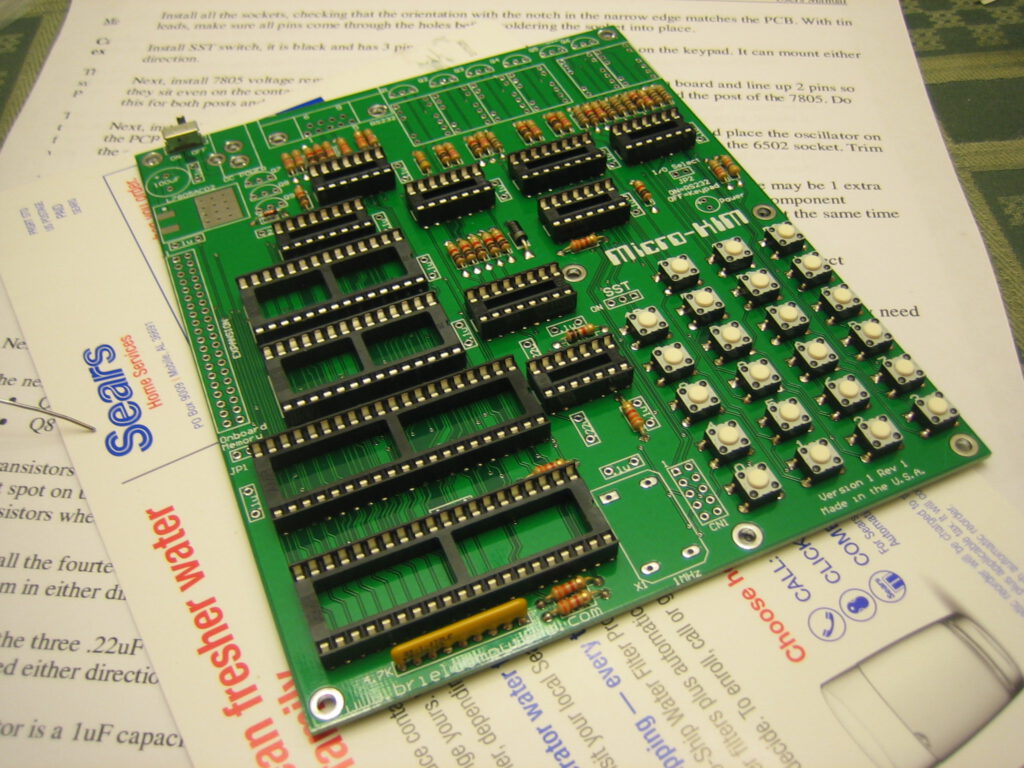

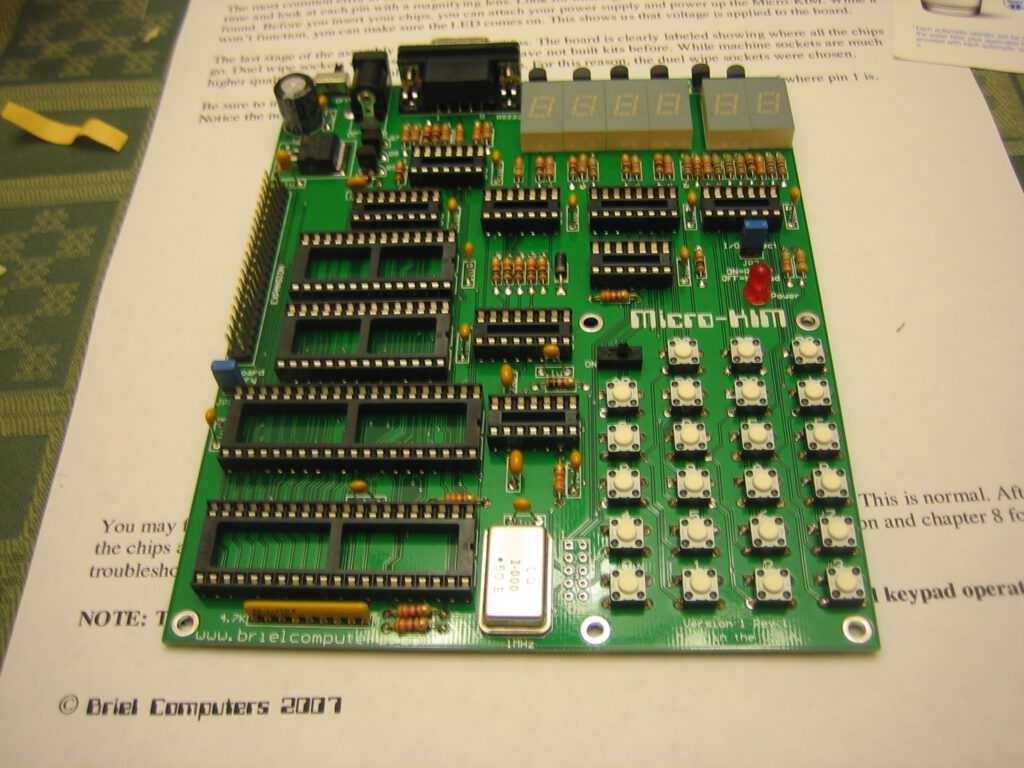
Videos
https://www.youtube.com/watch?v=R_zD5T_khKs



